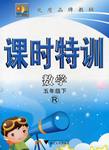题目内容
Albert Szent-Gyorgyi was born in Budapest on September 16, 1893. In 1911 he entered his uncle’s laboratory where he studied until the outbreak of World War One, when he joined the army. He served on the Italian and Russian fronts, and he was permitted to leave the army in 1917 after being wounded in action. He completed his studies in Budapest before he went to Hamburg for a two-year course in physical chemistry. In 1920 he became an assistant at a university in Leiden, the Netherlands and from 1922 to 1926 he worked with H. J. Hamburger at the Physiology Institute, Groningen, the Netherlands.
In 1926, Szent-Gyorgyi was ready to end his own life after an embarrassing problem in his career. The scientist, thirty-two, had written a paper and handed it to his boss for approval to publish. His boss threw it in the dustbin. Concluding his life was a failure, the young researcher quit. Unable to support his wife and child, he sent them home to her parents. His final wish was to attend one last scientific meeting, to be among scientists, to have one last good time. So he went to the 1926 International Physiological Society Congress in Sweden.
Sitting in the audience, lost in self-pity, Szent-Gyorgyi listened to the president of the society, Sir Frederick Gowland Hopkins, refer to the fine work of a researcher: Szent-Gyorgyi! After the speech, collecting his courage, he introduced himself to Hopkins. The great man invited the young scientist to Cambridge to do further work.
Szent-Gyorgyi’s life changed. He discovered the oxidation-preventing (防氧化的) action of vitamin C. He won the Nobel Prize in Physiology or Medicine in 1937. He accounted for his success by saying that discovery is seeing what everyone else has seen but thinking what nobody else has thought.
【小题1】Which of the following is the correct order of the events relevant to Szent-Gyorgyi?
a. finished his studies in Budapest
b. served during World War One
c. worked with Hopkins
d. studied in Hamburg
| A.b, c, a, d | B.b, a, d, c | C.a, c, d, b | D.a, b, d, c |
| A.His pride was hurt by his boss. |
| B.He was not satisfied with his paper. |
| C.He couldn’t support his family. |
| D.His boss stopped him attending a conference. |
| A.cause and effect |
| B.comparison and contrast |
| C.time and events |
| D.definition and classification |
【小题1】B
【小题2】A
【小题3】C
解析试题分析:文章介绍了爱因斯坦的生平事迹,他的工作学习,包括人生的低谷和后来的成就。
【小题1】排序题:从文章的第一段可知事件发生的顺序:b. served during World War One--
a. finished his studies in Budapest --d. studied in Hamburg --c. worked with Hopkins选B。
【小题2】从第二段的句子:In 1926, Szent-Gyorgyi was ready to end his own life after an embarrassing problem in his career. The scientist, thirty-two, had written a paper and handed it to his boss for approval to publish. His boss threw it in the dustbin.可知他的自尊被老板伤害了。选A
【小题3】写作手法题:文章是以故事发展的时间和事件来写的。选C
考点:考查人物传记类短文
点评:文章介绍了爱因斯坦的生平事迹,他的工作学习,包括人生的低谷和后来的成就。
内容比较适中,对于考生的能力要求不高,只要认真细致阅读,不难发现答案。可以先看题目再读文章,这样可以提高阅读的速度。还要准确定位考点。特别是推理题,要结合上下文的暗示做题,掌握方法是关键。

 课课练江苏系列答案
课课练江苏系列答案 名牌中学课时作业系列答案
名牌中学课时作业系列答案 明天教育课时特训系列答案
明天教育课时特训系列答案 浙江新课程三维目标测评课时特训系列答案
浙江新课程三维目标测评课时特训系列答案